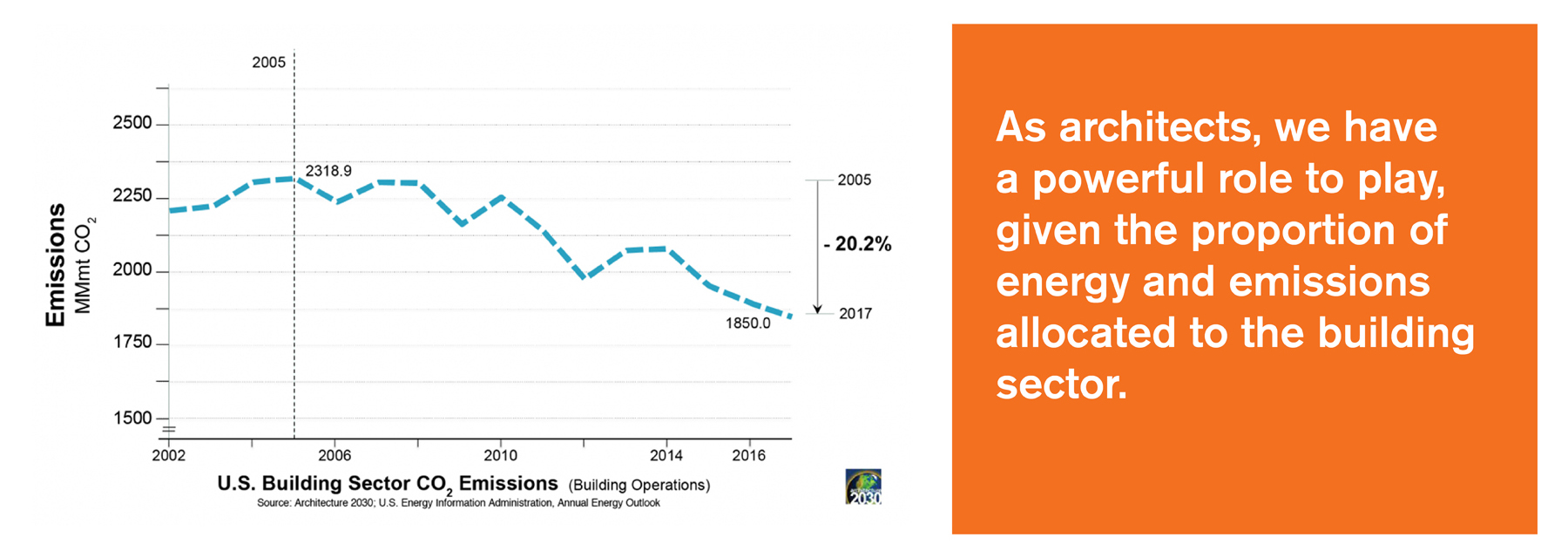
At LMSA, we are fortunate to partner with mission-driven clients, whose values align with our own: we design spaces that allow for societal and environmental equity, providing safe, efficient and resilient spaces for all members of society to work, live, and learn in. We have created a model of working with nonprofits and educational institutions to redefine design excellence, achieving deep green designs for the communities that need it most. I would be inclined to respond to Thoreau that we are industrious and spending our time well. Yet I still see room in our firm to evolve our practice to achieve deeper impact and anticipate our changing climate. How can we scale our impact to anticipate ambitious climate goals that are not yet mandated by codes or client requirements? What untapped low-carbon potential of our designs have we yet to discover? Fortunately, a program exists that intends to offer free resources for firms that are committed to design towards climate goals by 2030. The program has generated an inspiring growth in design professionals committing to change the definition of high-performance design from the ground up.
The AIA 2030 Commitment
The nonprofit organization Architecture 2030 issued the 2030 Challenge in 2006, advocating for all buildings, developments, and major renovations to be carbon neutral by 2030. In response, the American Institute of Architects created the 2030 Commitment, a voluntary program that AIA member firms can sign up for to gain access to a national framework and data analysis tool to guide and measure the impact of their design decisions on energy use. As of 2018, well over 500 architecture firms had signed on.
Member firms agree to submit statistics on every project, at least once a year, to the 2030 Commitment’s Design Data Exchange, including the type of building, the baseline energy performance, and the average predicted energy use intensity (pEUI) savings projections. Currently, signatories are targeting an overall reduction of 70% pEUI savings. This is set to increase in increments of 10% every five years until 2030, when pEUI savings should reach 100%.